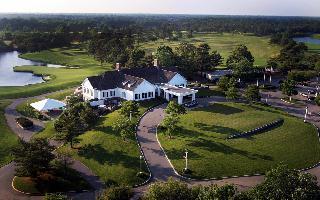How Mortgages Came To Be
You might think that the
mortgages we know and enjoy these days have been around for 100’s of
years. But in reality, conventional mortgages have been in
existence for slightly more than 70 years. The evolution of the
mortgage is a fascinating story.
The Creation of the Mortgage
The idea of offering a mortgage
did not originally come from banks or other lending institutions.
In fact, it came from the Insurance industry.
Lawyers, 150 years ago, as
today, were responsible for making sure that property titles were
registered accurately and properly. It became apparent, through the
court system, that a number of people were losing their homes
because lawyers and notaries were giving erroneous title
information. Thus, title insurance was created in response to the
need for reliable assurance to cover the loss caused by errors in
reporting the status of title. In 1874, Pennsylvania enacted the
first statutes authorizing the issuance of title insurance.
From 1900 to the early 1930’s,
the title insurance industry began to grow rapidly. The insurers
were able to convince third-party lenders that title insurance was
necessary for the financing of residential properties.
But mortgages back then were not
as they are now. In many cases, a person applying for a mortgage
had to have an 80% down payment. And the term of the mortgage was
for 3-5 years, with interest being the only payments. Then at the
end of the term, the homeowner was responsible for a balloon
payment, which meant they had to pay off the entire
mortgage.
A cynical view in those days was
that the insurance companies were not in the business of making
money though fees and interest, but rather, like a vulture, hoping
that the homeowner could not make the final balloon payment, and
thus lose their home.
The Great Depression
With the stock market crash of
1929, and the resulting depression in the early 1930’s, many people
lost their homes and property because they were out of work and
could not make the balloon payments on their mortgages. Also, many
lost their homes because they were unable to pay their property
taxes.
The Modern Mortgage
Shortly after the Great
Depression, the Federal Government got involved. The majority of
people had become renters, not homeowners. So, to get the American
population back into home ownership, the Federal Housing
Administration developed the
modern mortgage in 1934.
The modern mortgage included
these changes:
-
The FHA also started the
practice of qualifying people for mortgages, to ensure that they
could afford the payments. Up until that time, quite often a
mortgage was granted to people based on “who they knew”.
-
The FHA also created the
“amortization” of mortgages. As mentioned earlier, people were
losing their homes because they couldn’t come up with the balloon
payment at the end of the loan term. With amortization,
homeowners could now pay a little bit of the principal every
month, instead of just making interest payments. At the end of
the loan term, no balloon payment was necessary.
-
And the FHA ensured that all
lending institutions employ Escrow Mortgage accounts. That meant
that with every monthly payment of interest and principle, the
homeowner would also pay a little bit extra to cover insurance and
property taxes (PITI – Principal, Interest, Taxes, Insurance). The
lending institutions would make the payments to the government on
behalf of the homeowner.
Finally, after the Second World
War ended, the government wished to lend Veterans money for
mortgages so they could own homes as well. They extended the
regular term of the mortgage from 15 to 30 years. It was so popular
that conventional banks and lending institutions followed suit, and
we haven’t looked back since.
About The Author
David Morris is a successful
freelance writer providing tips and advice for consumers on
mortgages,
personal loans and
equity loans. Many have commented
that his articles have made financial topics easy to understand.
This article from "articles
for free" is reprinted with permission.
©
2004 - Articles-For-Free.com
|
|



